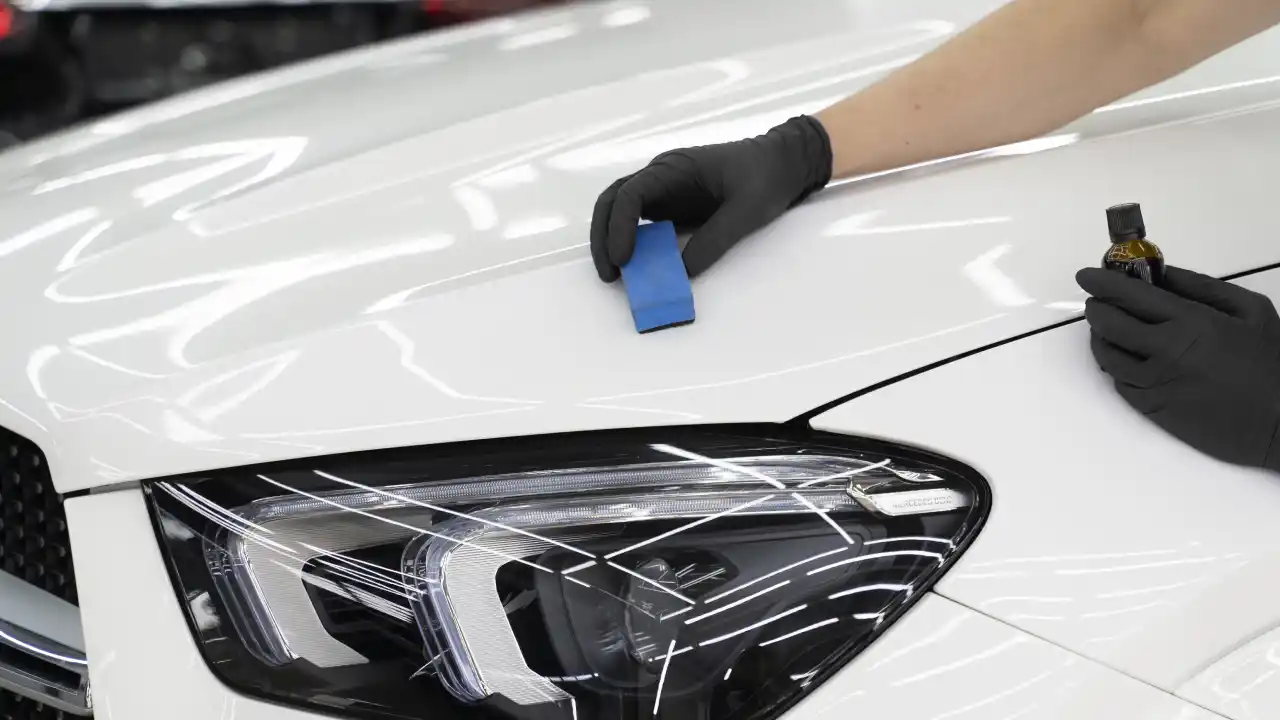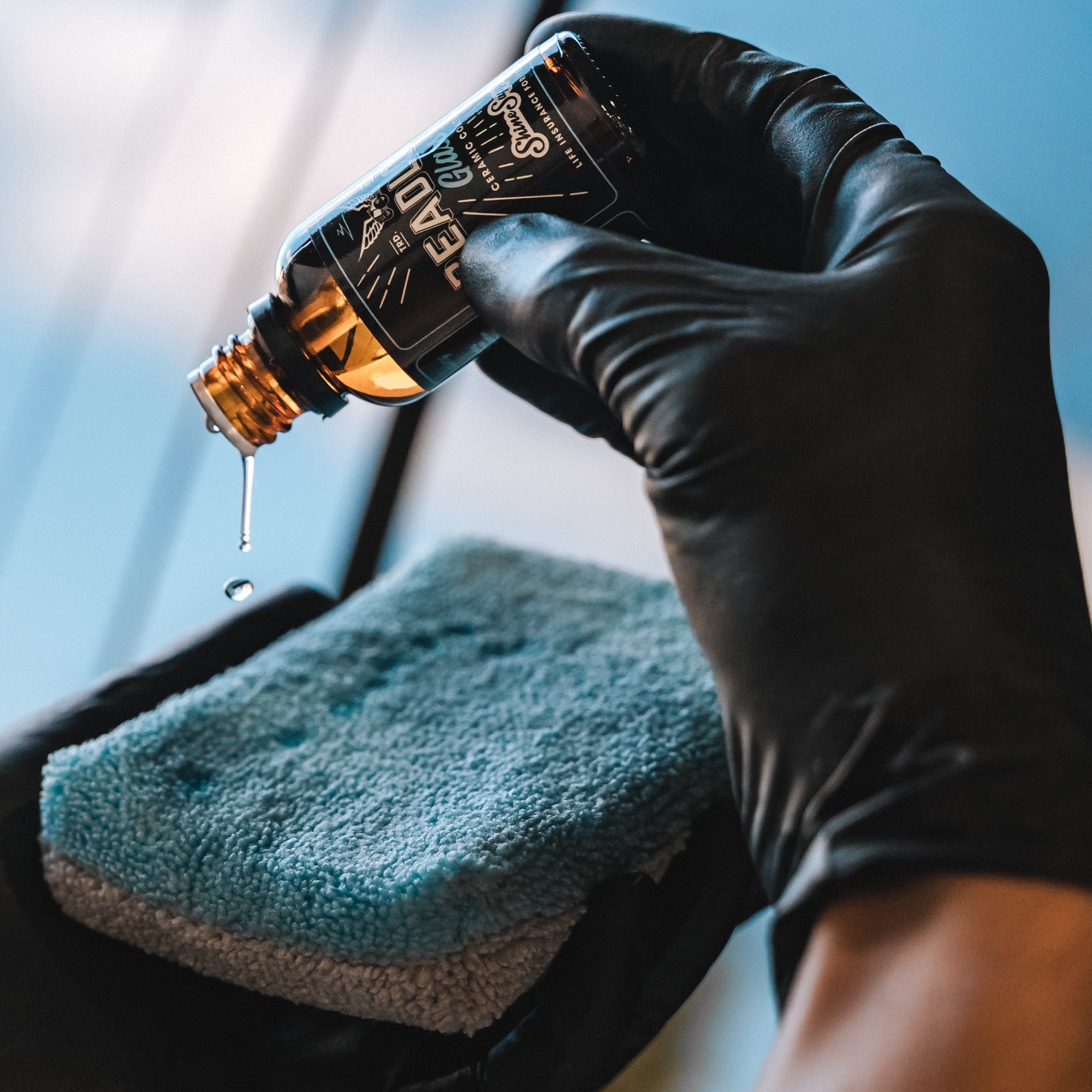Checking Out the Science Behind Ceramic Finishing and Its Effect On Vehicle Outlining
The application of ceramic finishing in automobile outlining represents a significant development in automotive care, rooted in its sophisticated chemical homes, primarily silica dioxide and titanium dioxide. Recognizing the science behind these products reveals not only the protective benefits they use yet additionally their role in enhancing a car's aesthetic durability. As we check out the details of the application procedure and the long-term effects for car maintenance, it ends up being clear that the option of ceramic finish can basically modify one's strategy to car care. What factors to consider should be made before devoting to this transformative remedy?
What Is Ceramic Covering?
Ceramic coating is a modern-day service that has obtained popularity in the automotive outlining industry for its capability to provide durable protection for lorry surfaces. This innovative safety layer is normally composed of silica dioxide (SiO2), which develops a solid bond with the car's paint, developing a resilient guard against environmental impurities. Unlike conventional wax or sealers, ceramic finishings offer remarkable resistance to UV rays, chemical stains, and physical abrasions.
The application of ceramic finish involves a careful procedure, where the vehicle's surface area is extensively cleaned and sanitized prior to the coating is applied (Ceramic Coating). As soon as healed, the covering boosts the vehicle's gloss, depth, and clearness, supplying a showroom-quality coating that lasts for years. One of the crucial benefits of ceramic covering is its hydrophobic residential or commercial properties, which push back water and dust, making upkeep easier and decreasing the frequency of laundries
The Chemistry of Ceramic Layer
A fundamental element of ceramic finish depends on its chemical composition, mainly defined by the existence of silica dioxide (SiO2) This substance is important to the development of a sturdy, safety layer that bonds chemically to the lorry's surface area. When used, the SiO2 particles undertake a procedure called polymerization, in which they create a network of interconnected frameworks. This results in a robust, hydrophobic surface area that fends off water and contaminants.
Along with SiO2, numerous ceramic finishes include titanium dioxide (TiO2) and various other ingredients to enhance their performance attributes. TiO2, for circumstances, adds to raised firmness and chemical resistance. The communication between these substances produces a special molecular structure that offers a high degree of security against ecological aspects such as UV rays, acid rain, and oxidation.
Furthermore, the application procedure typically involves a thorough preparation of the surface area to make certain ideal attachment of the finish. This chemistry not only makes certain a resilient finish yet likewise boosts the aesthetic allure of the automobile. Understanding the detailed chemistry behind ceramic finishings is essential for describing experts that aim to supply exceptional defense and longevity for their customers' vehicles.
Benefits of Ceramic Finish
While detailing professionals typically highlight the benefits of ceramic finishes, their benefits expand much past aesthetics. Ceramic coverings produce a hydrophobic surface that wards off grime, dirt, and water, considerably decreasing the frequency of laundries and the effort required to maintain a lorry's appearance.
Moreover, ceramic coverings enhance the longevity of the vehicle's coating. Unlike typical waxes or sealers, which might last a few months, ceramic coverings can endure for several years, providing a long-term remedy for vehicle care. This resilience converts to cost financial savings, as owners are less most likely to require frequent reapplication.
Furthermore, ceramic layers are resistant to chemical spots and official source etching, which can take place from acidic materials like bird droppings or tree sap. This resistance not only maintains the automobile's looks but additionally minimizes prospective damage - Ceramic Coating. On the whole, the financial investment in ceramic covering offers auto owners a substantial return in regards to security, ease of maintenance, and long-lasting aesthetic charm, making it an increasingly popular selection in the world of vehicle detailing
Application Refine Discussed

As soon as the surface area is adequately prepared, the ceramic coating can be applied. It is typically done in a regulated environment, such as a garage or detailing bay, to avoid contamination from dust and particles. Making use of an applicator pad, the service technician uses the finishing in small sections, operating in a crosshatch pattern to make sure also protection. It is vital to follow the producer's instructions regarding application density and treating times.
After applying the coating, the lorry should be allowed to heal, which may take numerous hours to numerous days, depending on the details product made use of. During this duration, it is important to maintain the car away from wetness and contaminants. When healed, the ceramic finish forms a strong bond with the paint, giving improved defense and a glossy coating. Proper application is vital to make best use of the durability navigate here and performance of the ceramic finishing.

Long-term Impact on Vehicle Treatment
The long-lasting effect of ceramic finishing on automobile care is considerable, as it essentially alters just how owners keep their lorries. By developing a long lasting, hydrophobic layer on the automobile's surface, ceramic coverings minimize the adherence of dust, gunk, and pollutants. This residential property decreases the frequency of washing called for, ultimately preserving water and cleansing products.
In Addition, the UV security offered by ceramic layers assists to avoid oxidation and fading of the lorry's paint, protecting its visual charm and resale value in time - Ceramic Coating. This protective obstacle also minimizes the likelihood of scrapes and swirl marks, which are common concerns in traditional paint coatings
Moreover, ceramic finishes help with less complicated maintenance, permitting owners to cleanse their vehicles with very little initiative. The smooth surface makes it tough for impurities to bond, allowing less complex removal during regular cleansing.
In the future, the investment in ceramic coating may cause set you back savings in car treatment product or services. Generally, the sustaining benefits of ceramic finishings not just boost the appearance of cars however additionally add to a more sustainable and efficient technique to vehicle maintenance.
Final Thought
Finally, the application of ceramic finishing stands for a substantial improvement in auto detailing, driven by its unique chemical structure of silica dioxide and titanium dioxide. This innovation not just enhances the aesthetic appeal of cars however additionally gives durable defense against environmental hazards and wear. The long-lasting benefits, including decreased maintenance frequency and improved sturdiness, highlight the value of ceramic finishings as an essential investment for keeping lorry look and stability gradually.
